Scheduling Your Guided Math Block
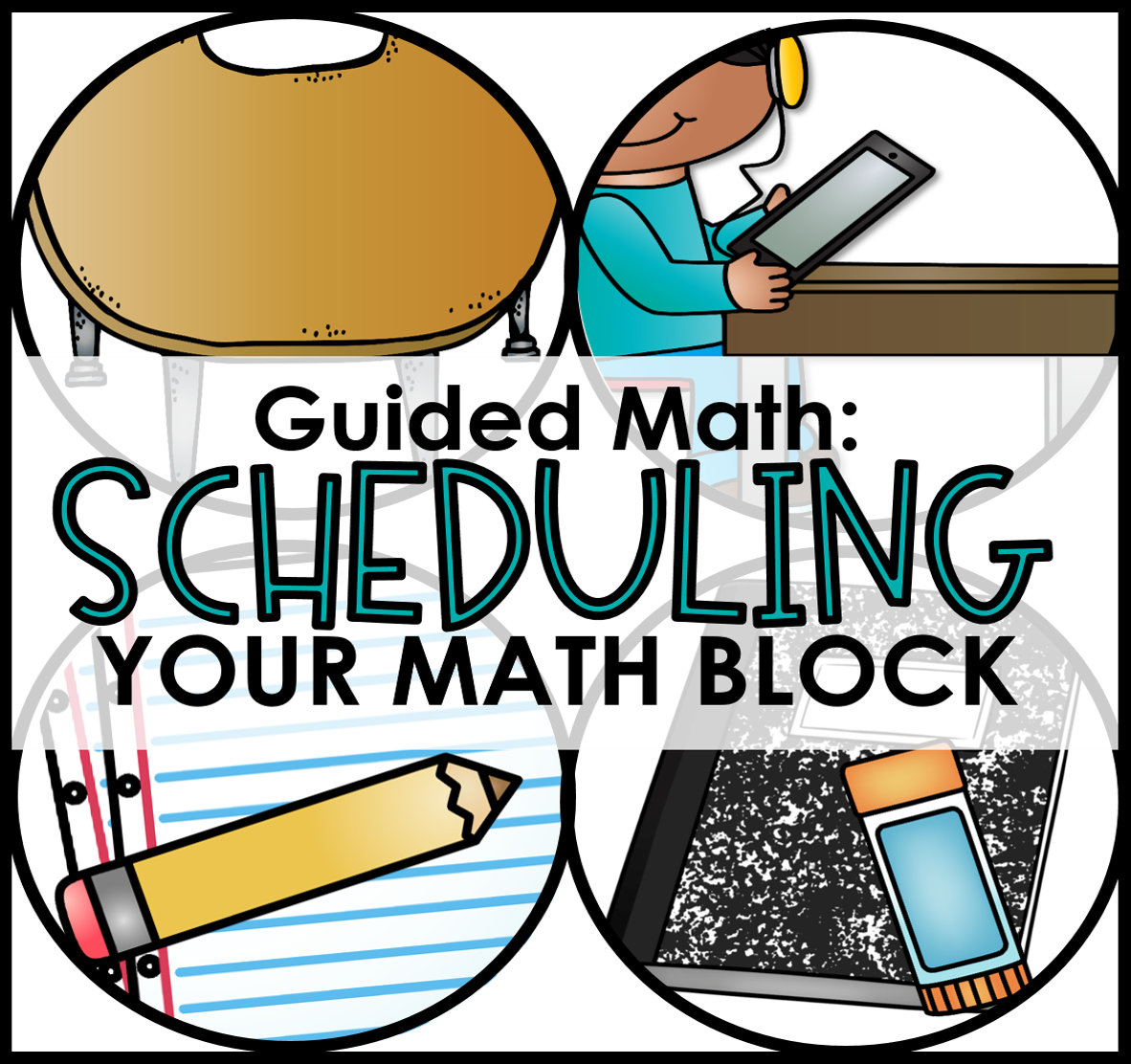
When it comes to scheduling a masterful guided math block, there are some important factors to consider! Let’s take a look at six sample guided math schedules together and discuss the benefits for each one. If you are looking for just the right schedule for your own math block, I think you’ll find it here! You can also grab these fun visual rotation icons for free later in the post.
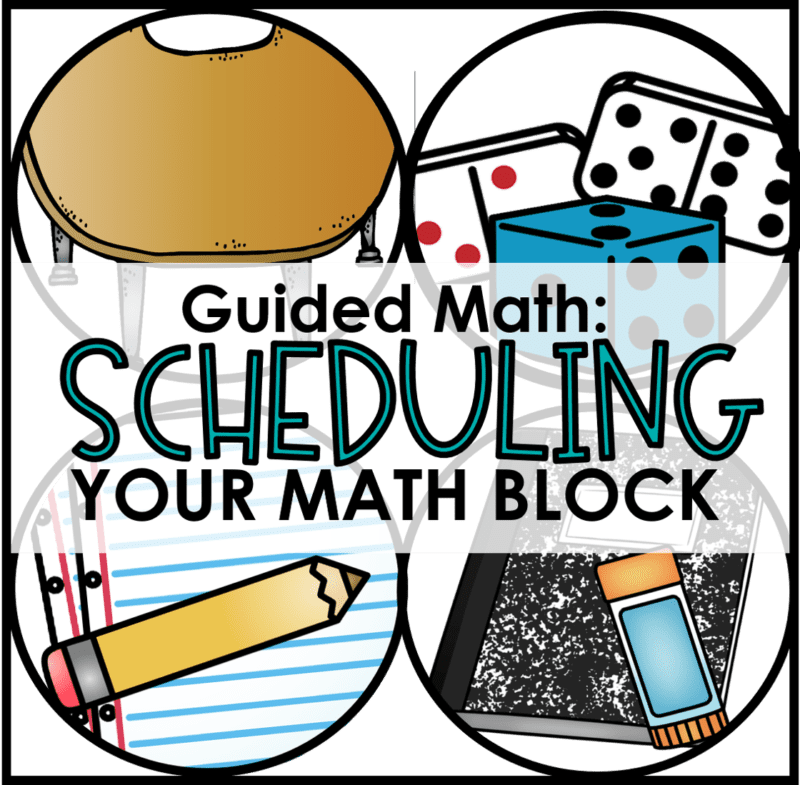
Guided Math Minutes
Across the nation, I have encountered educators K-5 with a range from 45-90 minutes for a math block. No matter the amount of minutes that you have, we can find just the right math block schedule to maximize the learning in your room! Ideally we want to find 60-90 minutes in our day that we can devote to math. Some years, I had to use two separate blocks of time in my day to split up the components of math in order to get my minutes in. Other years, I had a nice long stretch of time, which allowed us to start and finish our math block within the same uninterrupted time frame. Either way, it can be done!
first grade station on place value
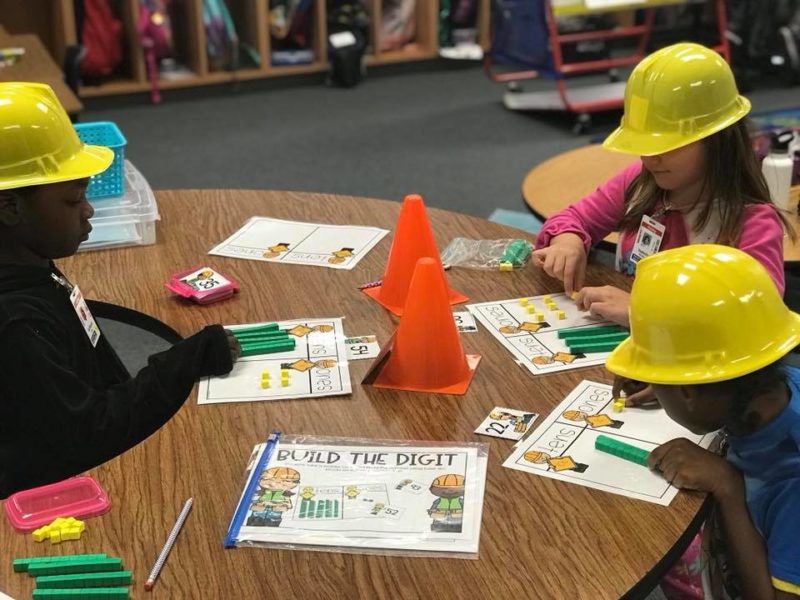
The Guided Math Warm-up
Before we start breaking down sample schedules, we need to understand the components that should be present in our math block . There are 4 over-arching components to the guided math block. The first component is the math warm-up. This is where we activate the brain for our lesson! The math warm-up consists of a short whole group activity to spiral review previous concepts building our mathematical reasoning, communication, problem-solving, and understanding over time! Math warm-up activities such as number chats, help students share strategies in solving problems. We want to allow about 10 minutes for a math warm-up activity in our math block. This is done whole group.
This is a time for you to spiral review your standards that you’ve taught, or that will need numerous repetitions for understanding. We want to review important math concepts daily disguised as fun warm-up games!
Let’s take a look at some second grade math warm-up activities. These are all open-ended, yet they will review important skills students need repeated exposure and practice to master.
From Guided Math By Reagan Tunstall
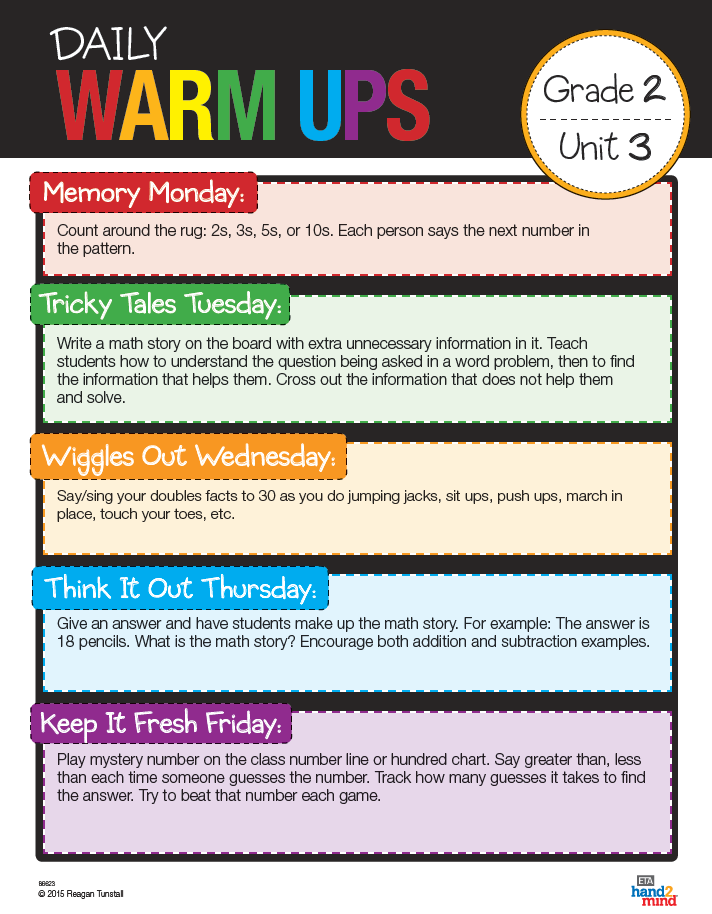
Whole Group Mini-Lesson
From our warm-up, we move into a short powerful mini-lesson. The time spent on a mini-lesson ranges from a short 10 minutes to a longer 20 minute session. Keep in mind that the age, mathematical development of the student, and the complexity of the lesson will play a part in pacing and lesson length. In order to help keep the mini-lesson mini, we want to have a clear plan and stick to it!
Kindergarten Guided Math Mini-Lesson
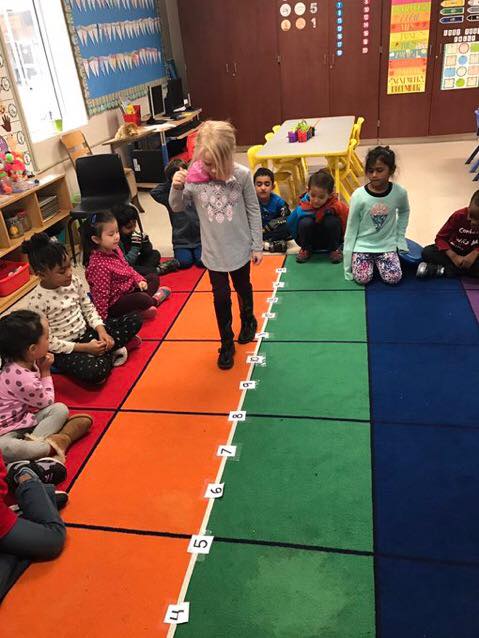
Think of a mini-lesson as a way to introduce a new math topic through three channels. Connecting to the student’s understanding, collaborating as mathematicians to strategize, reason, and work, and communicating our understanding with peers and teacher.
First Grade Guided Math Mini-Lesson on Measurement
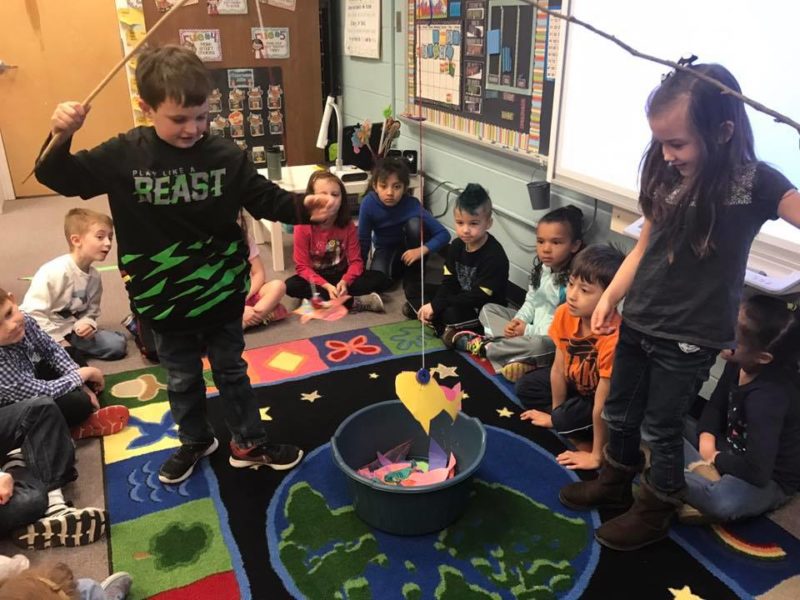
First Grade Guided Math Lesson on Missing Addend

Small Group and Workstations
Once you complete your warm-up and math mini-lesson, it’s time to meet with students in a small group lesson! In order to do this, we want to create a rotation system of workstations that the class can follow for a span of time each day. There’s many different ways to structure and schedule out this portion of the math block. Let’s find the one that fits your needs! Here’s some visuals to show different rotation options and schedules.
2 Rotations
The flip-flop math block consists of two main activities happening each day simultaneously. This method allows teacher to take half of the students and dig deeper into the math lesson with a smaller group. The other half of the class is out at workstations during this time and then the two groups switch. I put suggested times for groups, but each teacher and his/her students would ultimately make that call.
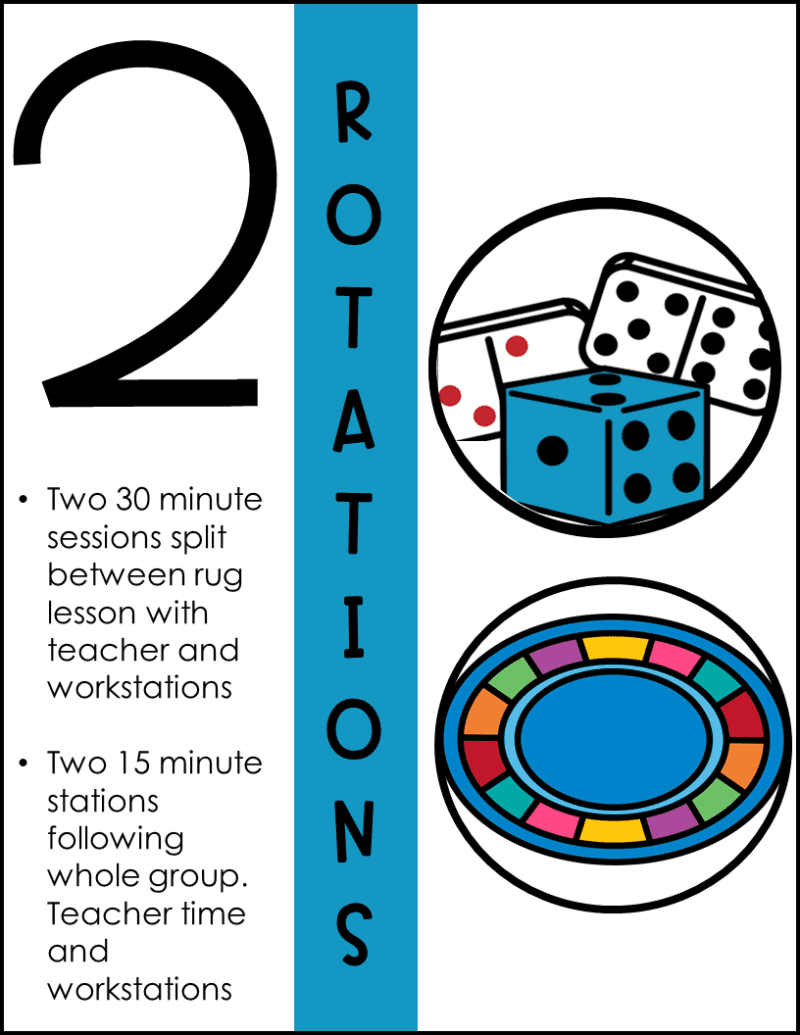
3 Rotations
In this structure, teacher is one of three workstations. For class sizes around 21, this can be an ideal grouping model. It allows students to spread out and work in collaborative groups, while also getting the important teacher time small group lesson. One tricky factor with this system is that student groups are still fairly large. There’s ways to make this work seamlessly, but it takes a strong structure and consistency. Teacher must set expectations for choices and procedures to eliminate disruptions.
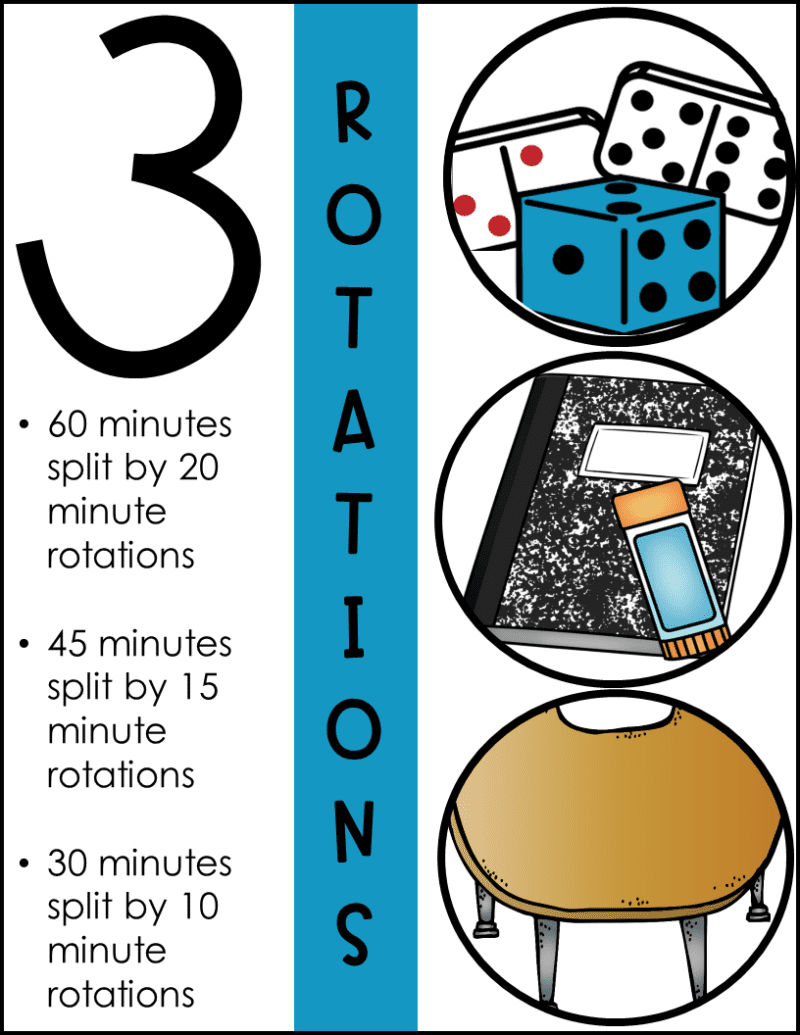
4 Rotations
This is a popular choice in splitting up class sizes of 16-24. (or larger in many cases) Splitting your class into 4 rotations allows students to experience math concepts in different formats and creates a well rounded math experience through this exposure. Like the other choices, this one focuses on students visiting the teacher table. Teacher can be a separate station pulling from the other three, or teacher table (small group) can be one of the 4 rotations.
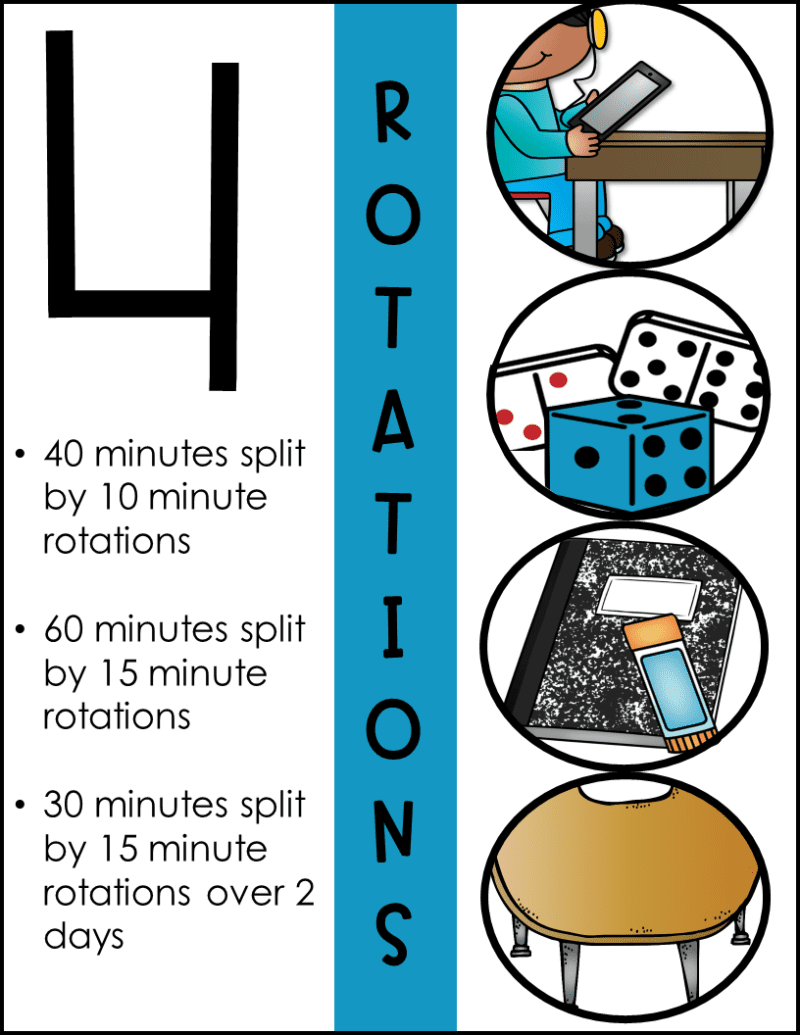
5 Rotations
For class sizes of 15-30, this is another popular choice. The benefits of a larger number of workstations, is the ability to create targeted differentiated small groups that are in fact SMALL. This is wonderful if you have an overly boisterous group and need to separate students to work together in ways that keep chaos and volume down.
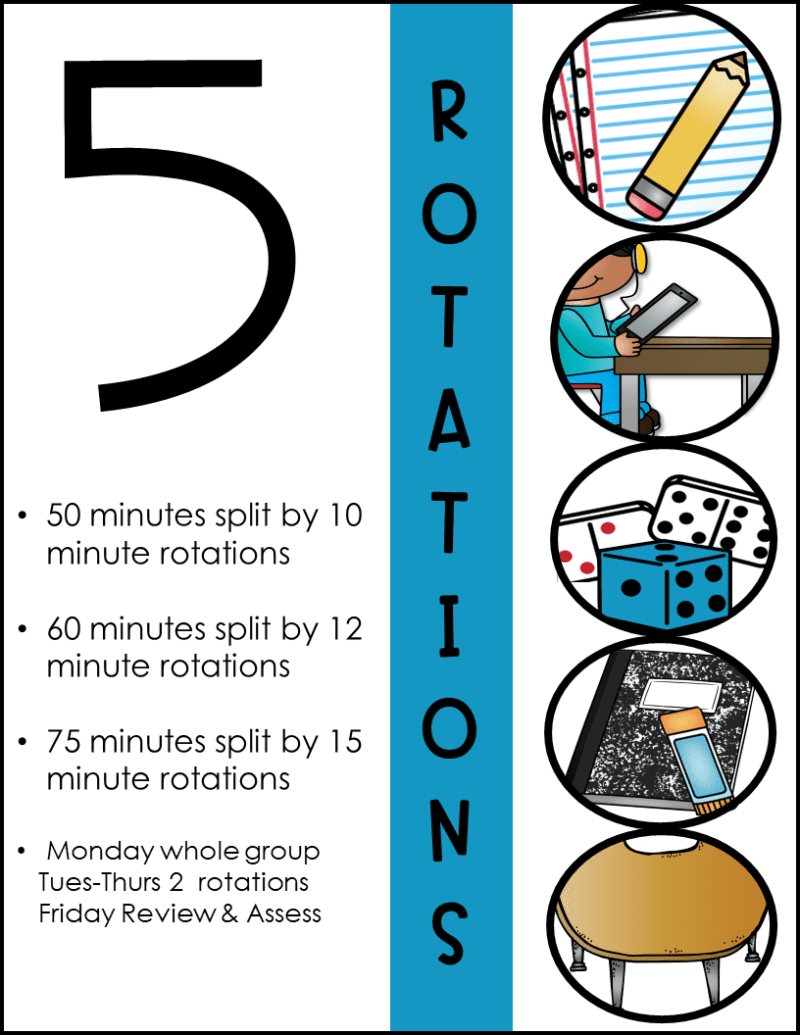
6 Rotations
6 rotations is a great choice again to allow for intervention and differentiation. It keeps larger class sizes in smaller collaborative groups. This amount of rotations is usually spread over days or the week.
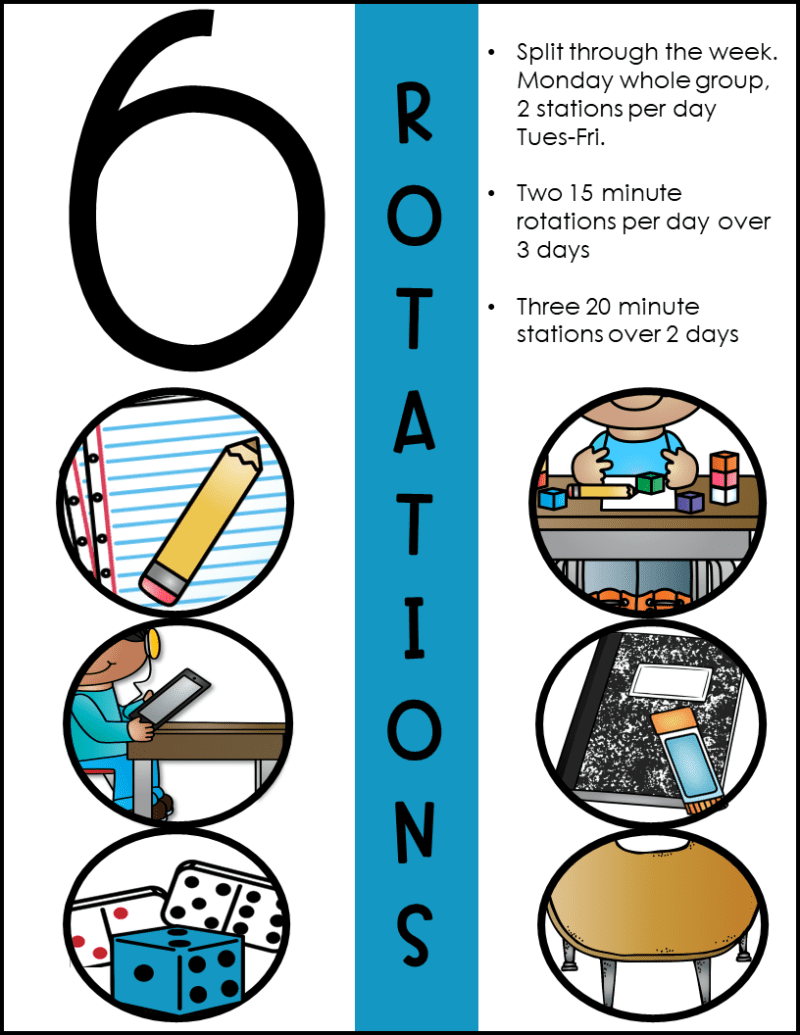
Let’s Get Visual
If you’ve read my blog on math rotations before, you might know that I follow the acronym STACK. Each letter in STACK represents a workstation activity. Whether you want 2-6 station choices, is completely teacher choice! What the students are doing in those stations is also teacher choice! I found that the combination of activities below, helped to create a lower volume, less chaotic mathematical hum of productivity!
S is for small group
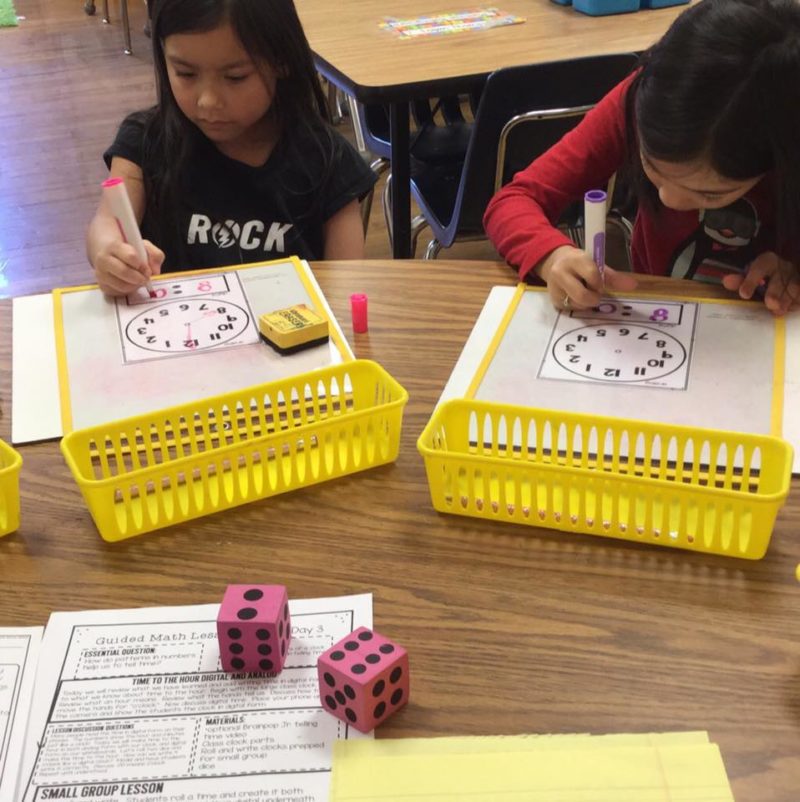
Guided Math Whole Group and Small Group Lessons Available Grades K-4
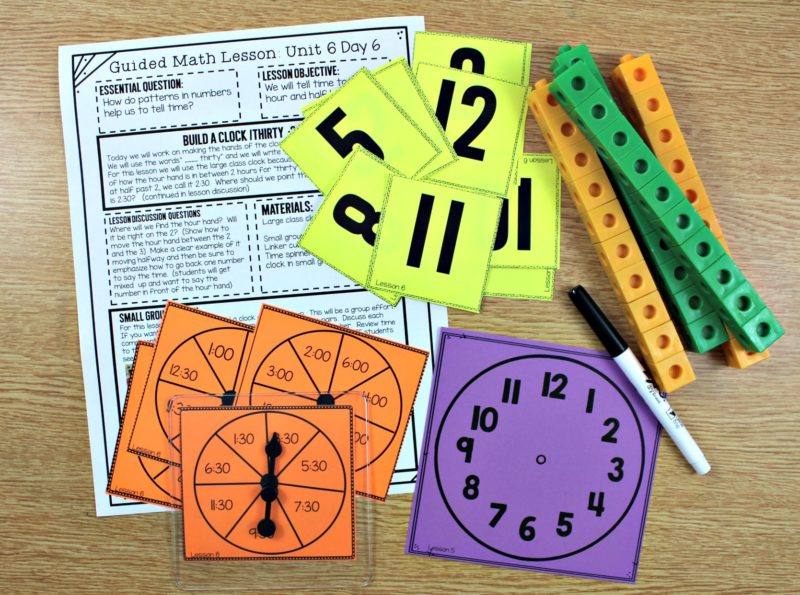
T is for Technology
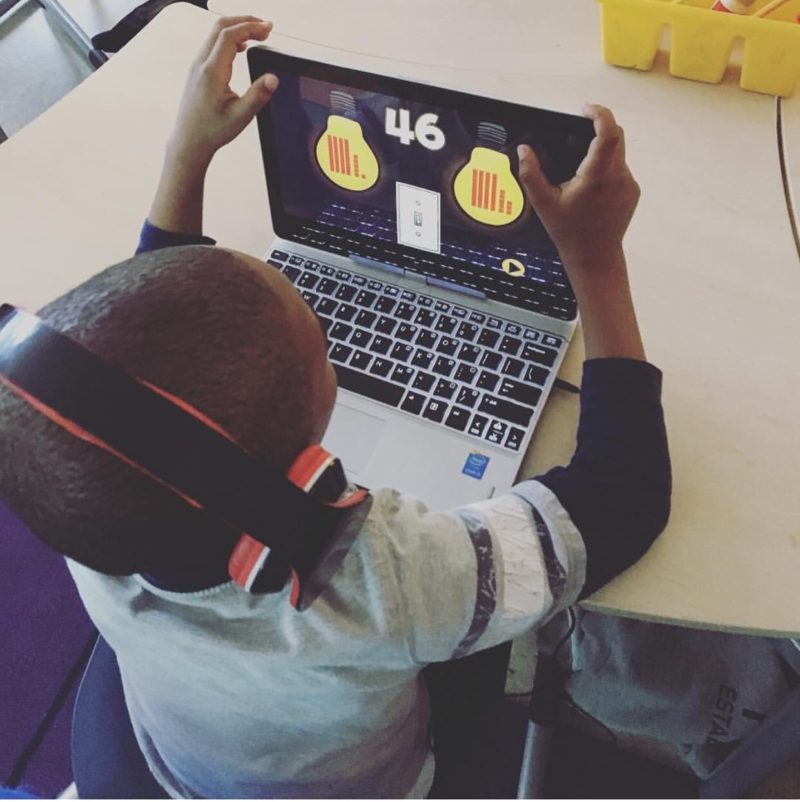
Interactive Math Games (first grade) Tech Tasks (first grade)
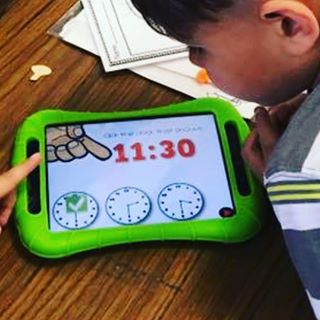
A is for application station (independent practice)
Math Supplements including number chats, practice pages, and exit tickets Available Grades K-2
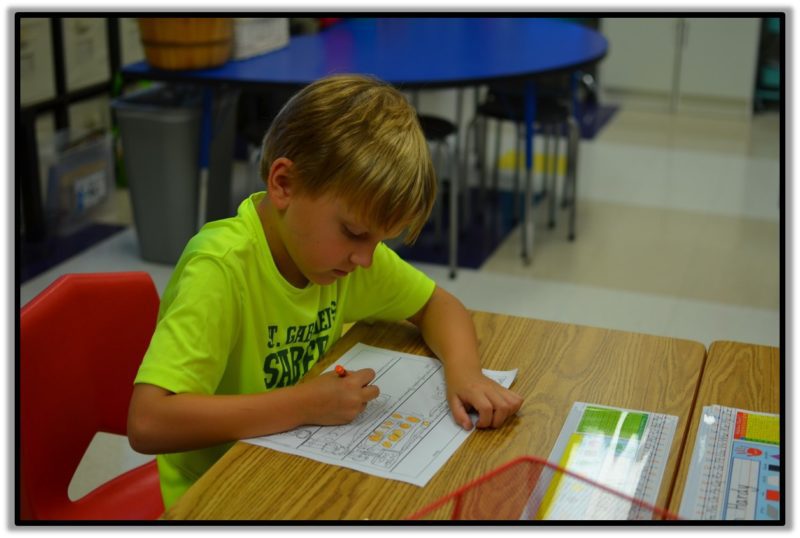
C is for Create (math journal)
Math Journals available K-3
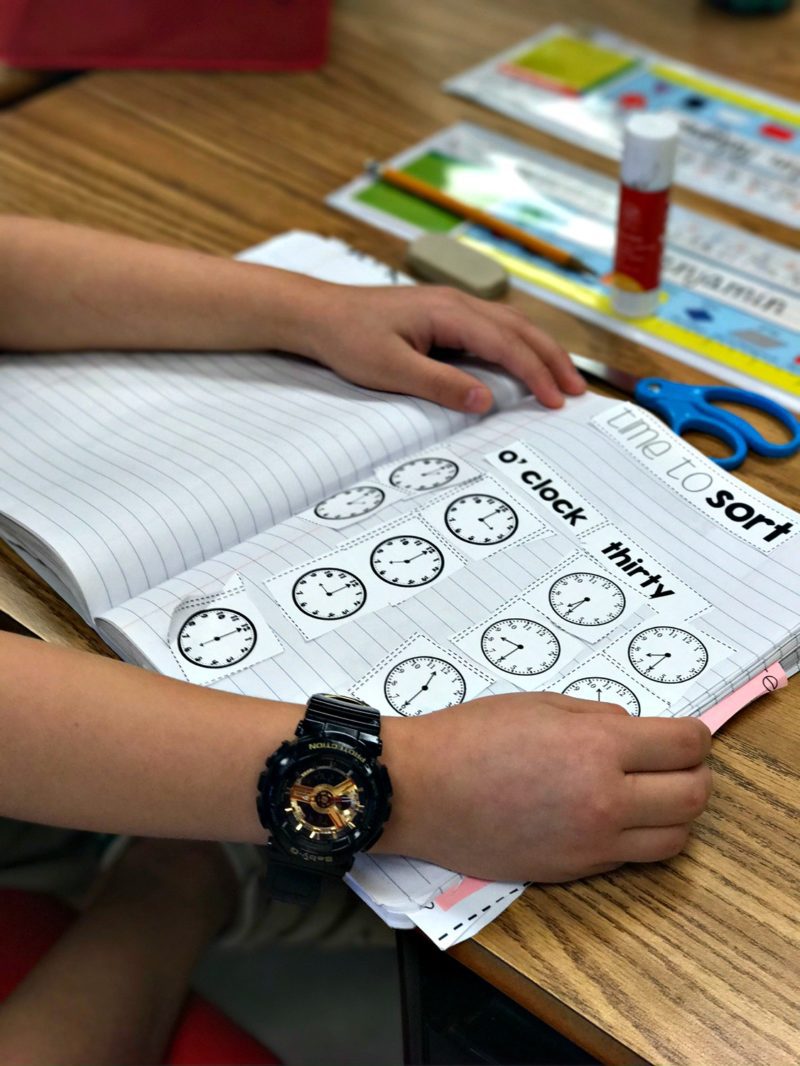
K is for Kinesthetic (Hands-on math skills practice)
Math Centers available K-4
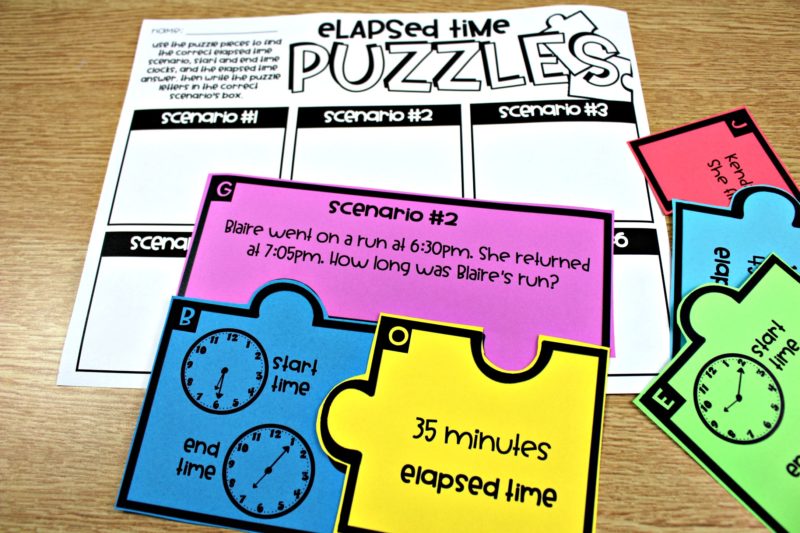

Staying on Track
If you are looking for a visual system to pull together your rotations and keep yourself and your students on track, I have a customizable math timer rotation system! You can create the number of rounds, the time for your rounds, and the activity students go to by moving the pieces around! All of the transitions are built in so you just click play and you are ready to jump into math rotations!
Resources
If you are looking for the right resources to support guided math warm-up, whole group, small group, and workstations, I can help! Visit my TpT store HERE, and check out the gray custom category links on the left side! There you can find your grade level and type of resource you need. If you are a school or district looking for hard goods for guided math, you can find guided math lessons for K-2 HERE. Shoot me an email if you have any questions!
Rotation Table and Tub Signs Freebie
Here’s a freebie just for you! Put these signs on your tables or tubs to help students find and transition through math rotations each day. Click the picture below to get the free download.
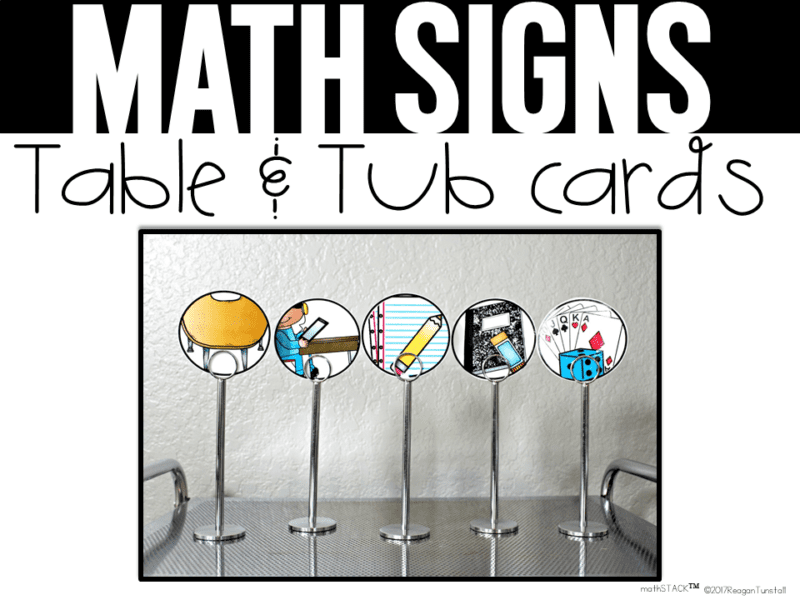
If you are ready to get started in guided math and want to see these rotations further explained, check out THIS POST on making Math Rotations your favorite time of day!

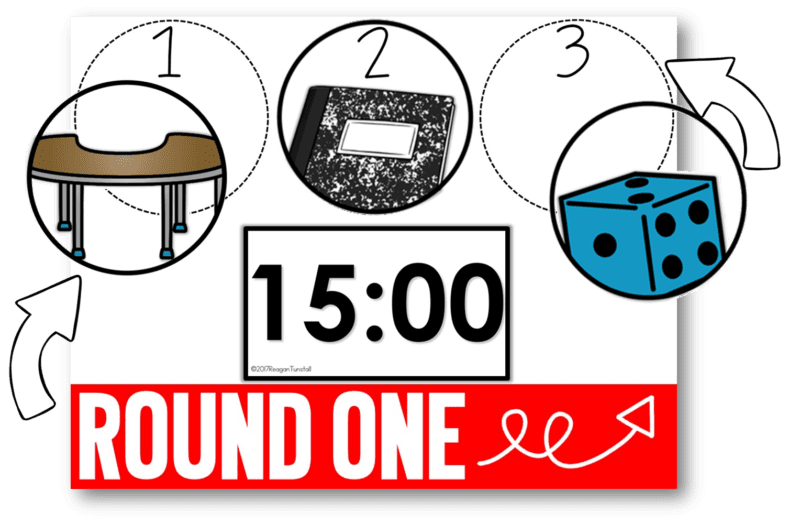
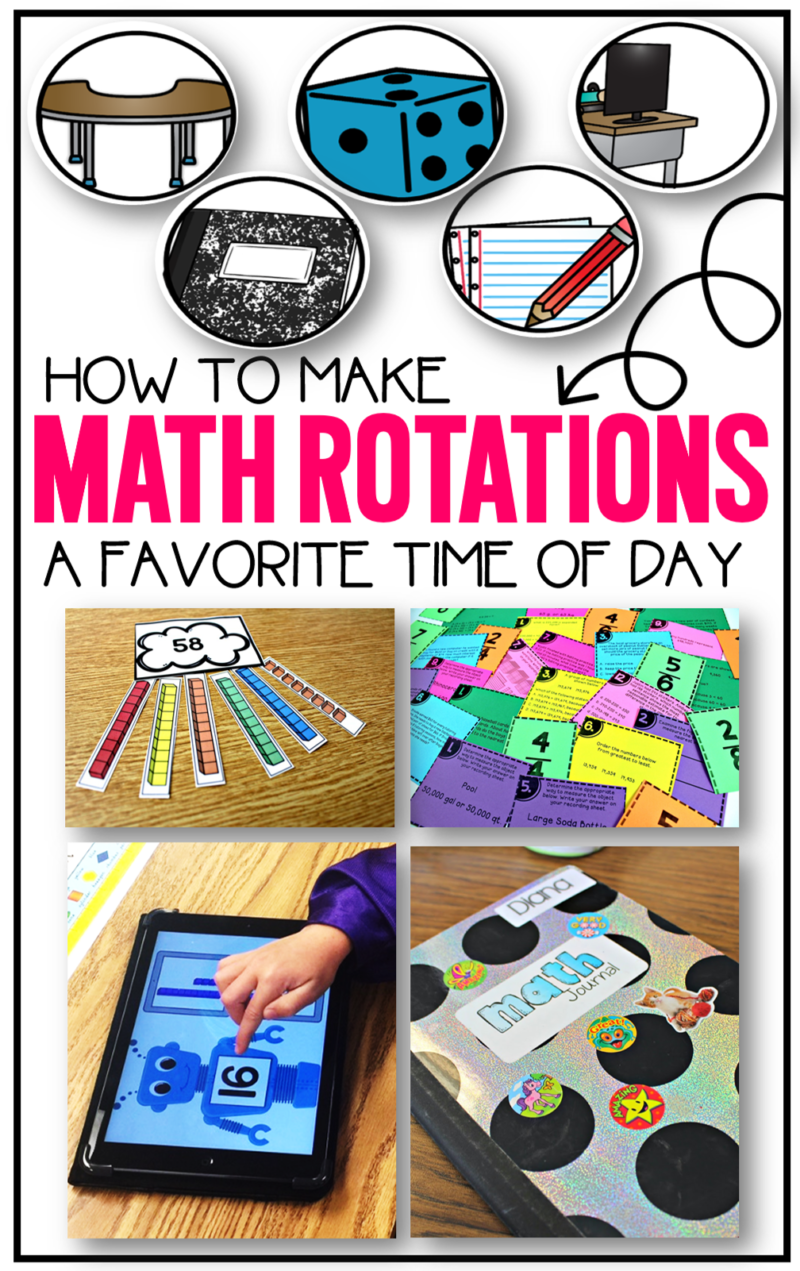
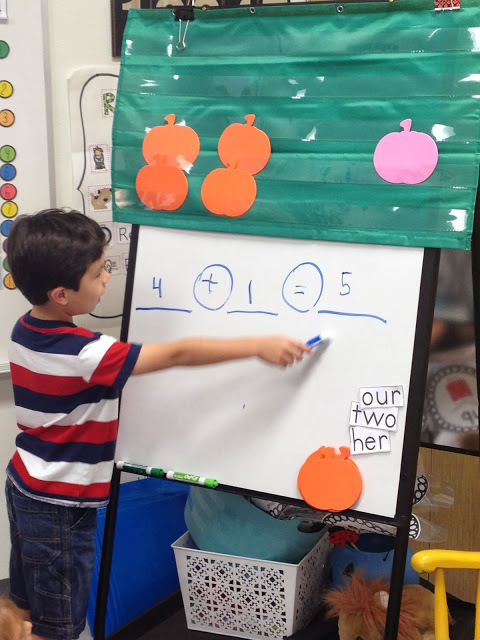
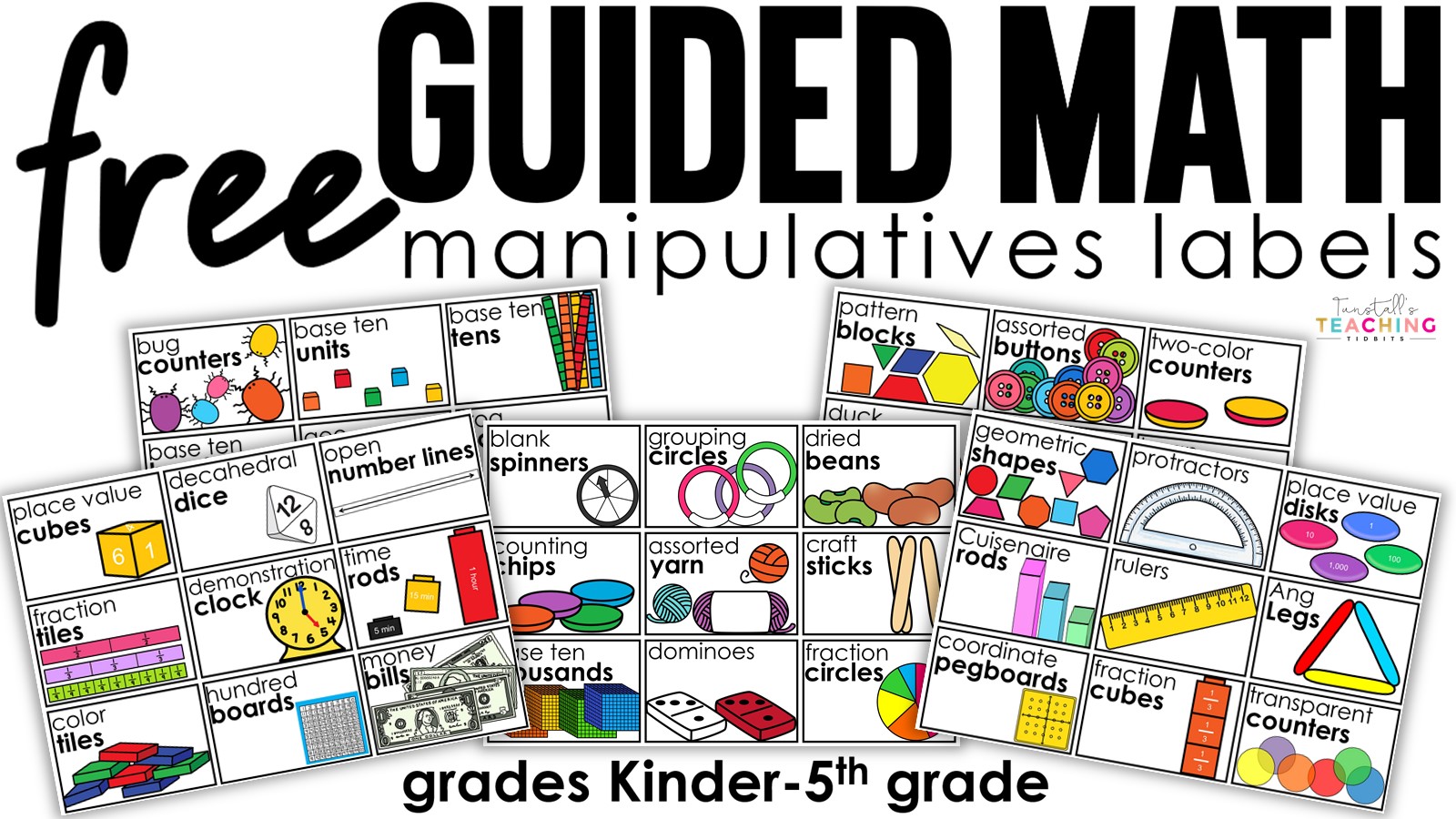
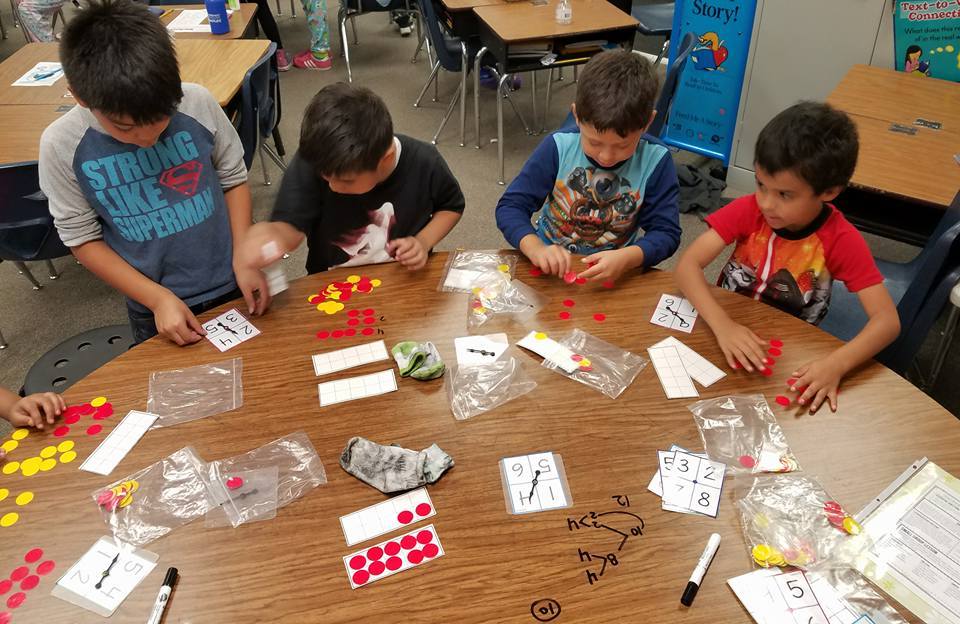
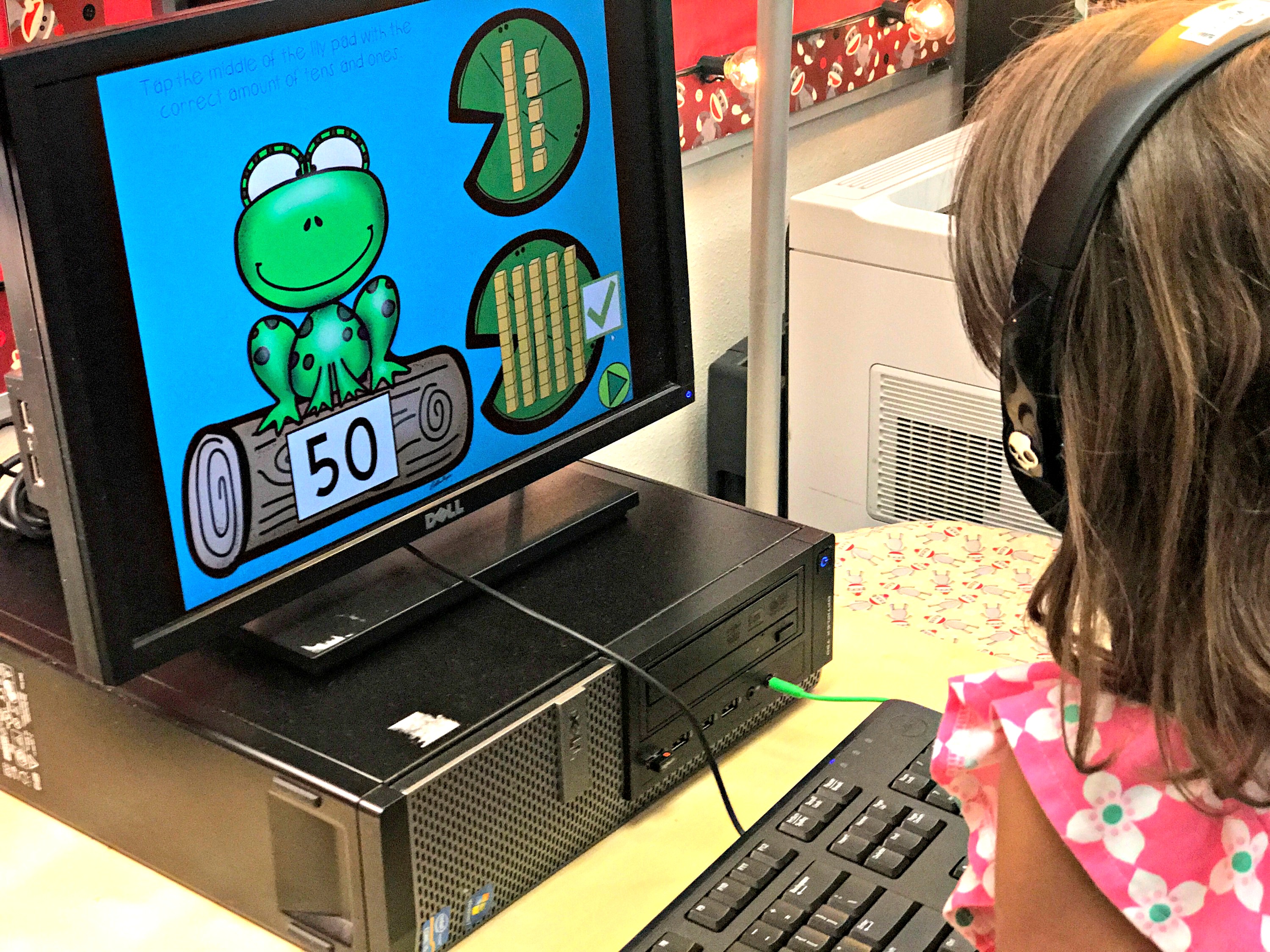
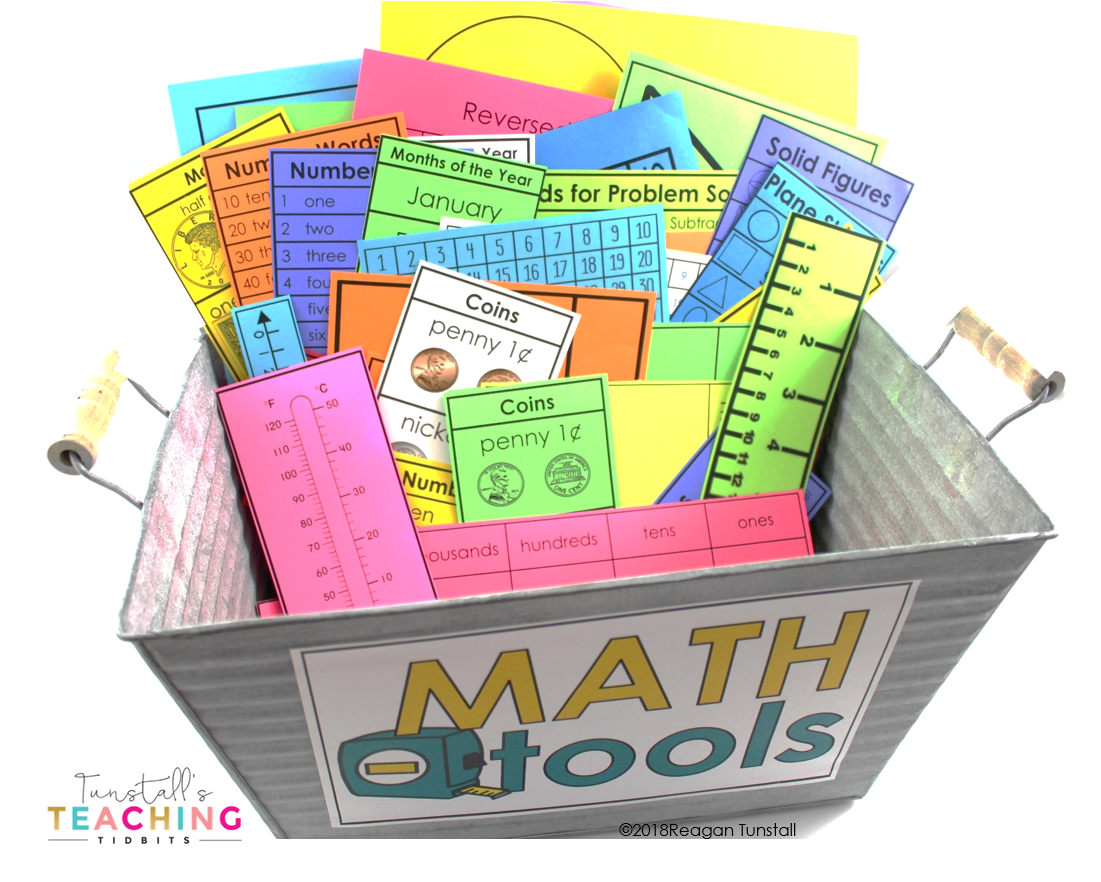
I have your guided math bundle units for 2nd grade and love them. I am hoping to purchase your premade bundle tubs as well. However, I was wondering if you have any plans to make any of it compatible to use on the smart board, or will I need to just scan all the pages so I can teach some of the whole group activities myself?
What are the “premade bundle tubs”?
Very informative post. It is very useful for me. Because i am a teacher .Thank you for sharing “Scheduling-guided-math-block” for us.
Hi Regan! I am so excited to be moving to 2nd grade this year from first, and to try out guided math!!! I have 32 kiddos this year(yikes) so I am interested in using the 6 rotations to make my groups as small as possible. What would you recommend be he 6th rotation, since STACK is designed for 5? An extra kinesthetic station? Thanks for your input!
These are amazing suggestions to fit any class size and need. Do you follow a graded math resource such as EveryDay Math, enVision Math, Ready Math, Connected Math, etc. program as well?
I have the timers already, I was wondering if there is a google slide version? My school iPad does not have PowerPoint so the timers don’t work on my iPad.